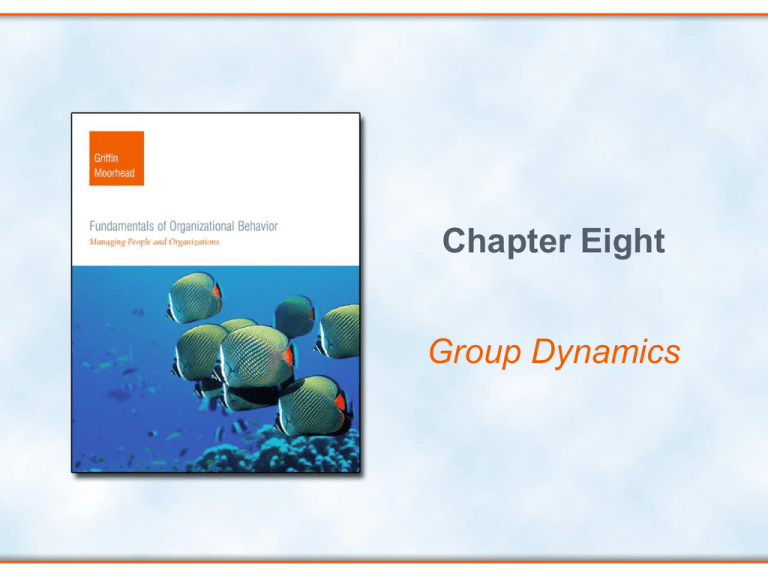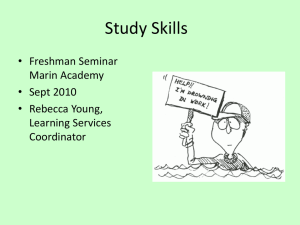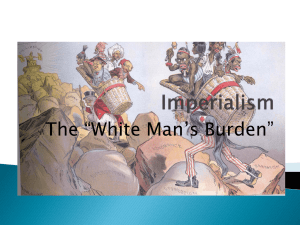
Chapter Eight
Group Dynamics
Chapter Objectives
• Define a group.
• Discuss the types of groups commonly
found in organizations.
• Describe the general stages of group
development.
• Discuss the major group performance
factors.
Copyright © Houghton Mifflin Company. All rights reserved.
8-2
Chapter Objectives (continued)
• Describe intergroup dynamics.
• Explain conflict in organizations.
• Discuss methods for managing group
and intergroup dynamics.
Copyright © Houghton Mifflin Company. All rights reserved.
8-3
The Nature of Groups
• Group
– Two or more people who interact with one another
such that each person influences and is influenced by
each other person.
• Two people who are physically near each other are not a
group unless they interact and have some influence on each
other.
• Coworkers may work side by side on related tasks, but if they
do not interact, they are not a group.
• Managerial Perspective
– From a managerial perspective, the work group is the
primary means by which managers coordinate
individuals’ behavior to achieve organizational goals.
Copyright © Houghton Mifflin Company. All rights reserved.
8-4
Figure 8.1:
A General
Model of Group
Dynamics
Copyright © Houghton Mifflin Company. All rights reserved.
8-5
Types of Groups
• Formal Groups
– Established by the organization to do its work
– Include command (or functional) groups, task
groups, and affinity groups.
• command group – a relatively permanent, formal group
with functional reporting relationships and is usually
included in the organization chart
• task or special-project group -- a relatively temporary,
formal group established to do a specific task
• affinity group – a collection of employees from the same
level in the organization who meet on a regular basis to
share information, capture emerging opportunities, and
solve problem
Copyright © Houghton Mifflin Company. All rights reserved.
8-6
Types of Groups (continued)
• Informal Groups
– Established by its members.
– Consist of friendship groups, which are relatively
permanent, and interest groups, which may be
shorter lives.
• friendship group – relatively permanent and informal, and
draws its benefits from the social relationships among its
members.
• interest group – relatively temporary and informal, and is
organized around an activity or interest shared by its
members.
Copyright © Houghton Mifflin Company. All rights reserved.
8-7
Table 8.1: Classification Schemes for Types of
Groups
Copyright © Houghton Mifflin Company. All rights reserved.
8-8
Stages of Group Development
• Groups are not static; they typically
develop through a four-stage process:
1.
2.
3.
4.
Mutual acceptance
Communication and decision making
Motivation and productivity
Control and organization
Copyright © Houghton Mifflin Company. All rights reserved.
8-9
Mutual Acceptance
• Mutual Acceptance
– A stage of group development, in which the group
forms and members get to know one another by
sharing information about themselves
• They often test one another’s opinions by discussing
subjects that have little to do with the group, such as the
weather, sports, or recent events within the organization.
• As the members get to know one another, discussion
may turn to more sensitive issues, such as the
organization’s politics or recent controversial decisions.
Copyright © Houghton Mifflin Company. All rights reserved.
8-10
Other Stages of Group Development
• Communication and Decision Making
– Members discuss their feelings more openly and
agree on group goals and individual roles in the
group.
• Motivation and Productivity
– The emphasis shifts away from personal concerns
and viewpoints to activities that will benefit the
group.
• Control and Organization
– The group works towards accomplishing its goals.
Copyright © Houghton Mifflin Company. All rights reserved.
8-11
Figure 8.2: Stages of Group Development
Copyright © Houghton Mifflin Company. All rights reserved.
8-12
Group Performance Factors
• The performance of any group is
affected by four factors other than the
group’s reasons for forming and the
stages of its development:
– Composition
– Size
– Norms
– Cohesiveness
Copyright © Houghton Mifflin Company. All rights reserved.
8-13
Group Composition
• The degree of similarity or difference among
group members on factors important to the
group’s work.
– Most often described in terms of the homogeneity
or heterogeneity of the members.
• homogeneous if members are similar in one or several
ways that are critical to the work of the group
• heterogeneous if members differ in one or more ways
critical to the group’s work
Copyright © Houghton Mifflin Company. All rights reserved.
8-14
Table 8.2: Task Variable and Group
Composition
Copyright © Houghton Mifflin Company. All rights reserved.
8-15
Group Size
• Group Size
– The number of members of the group; affects the
number of resources available to perform the task.
• In groups established to generate ideas, those with more
members tend to produce more ideas, although the rate
of increase in the number of ideas diminishes rapidly as
the group grows.
• Social Loafing
– The tendency of some members of groups to put
forth less effort in a group than they would when
working alone.
Copyright © Houghton Mifflin Company. All rights reserved.
8-16
Group Norms
• Usually established during the second stage
of group development (communication and
decision making) and carried forward into the
maturity stage.
• By providing a basis for predicting others’ behaviors,
norms enable people to behave in a manner consistent
with and acceptable to the group.
• Without norms, the activities in a group would be chaotic.
Copyright © Houghton Mifflin Company. All rights reserved.
8-17
Group Cohesiveness
• The extent to which a group is
committed to staying together.
– The forces that create cohesiveness:
• attraction to the group
• resistance to leaving the group
• motivation to remain a member.
Copyright © Houghton Mifflin Company. All rights reserved.
8-18
Figure 8.4: Group Cohesiveness, Goals, and
Productivity
Copyright © Houghton Mifflin Company. All rights reserved.
8-19
Intergroup Dynamics
• A group’s contribution to an organization
depends on its interactions with other
groups as well as on its own
productivity.
• Intergroup Dynamics
– Interactions are the key to understanding
intergroup dynamics.
Copyright © Houghton Mifflin Company. All rights reserved.
8-20
Figure 8.5:
Factors That
Influence
Intergroup
Interactions
Copyright © Houghton Mifflin Company. All rights reserved.
8-21
Conflict in Groups and Organizations
• Conflict often occurs when groups interact in
organizations.
• In its simplest form, conflict is disagreement among
parties.
• When people, groups, or organizations disagree over
significant issues, conflict often results.
• Benefits of Conflict
– Although conflict is often considered harmful and
thus something to avoid, it can also have some
benefits.
– A total absence of conflict can lead to apathy and
lethargy.
Copyright © Houghton Mifflin Company. All rights reserved.
8-22
Reactions to Conflict
• Avoidance
– Occurs when the interacting parties’ goals are
incompatible and the interaction among groups is
relatively unimportant to the attainment of the
goals
• Accommodation
– Occurs when the parties’ goals are compatible and
the interaction among groups is relatively
unimportant to the goals’ attainment
Copyright © Houghton Mifflin Company. All rights reserved.
8-23
Reactions to Conflict (continued)
• Competition
– Occurs when the parties’ goals are incompatible and
the interactions among group are important to
meeting goals
• Collaboration
– Occurs when the interaction among groups is very
important to goal attainment and the goals are
compatible
• Compromise
– Occurs when the interaction is moderately important
to meeting goals, and the goals are neither
completely compatible nor completely incompatible
Copyright © Houghton Mifflin Company. All rights reserved.
8-24
Managing Conflict
• Conflict Resolution
– Occurs when a manager resolves a conflict
that has become harmful or serious.
• Conflict Stimulation
– The creation and constructive use of
conflict by a manager.
Copyright © Houghton Mifflin Company. All rights reserved.
8-25
Managing Group and Intergroup Dynamics in
Organizations
• Managing groups effectively requires:
– Knowing what types of groups exist in the
organization
– Possibly “formalizing” some informal groups
– Breaking up groups to realign the organization and
goals
– Nurturing groups through the development stage
– Encouraging the development of group norms and
roles
– Developing a reward structure that fosters
individual efforts to achieve group goals
Copyright © Houghton Mifflin Company. All rights reserved.
8-26







